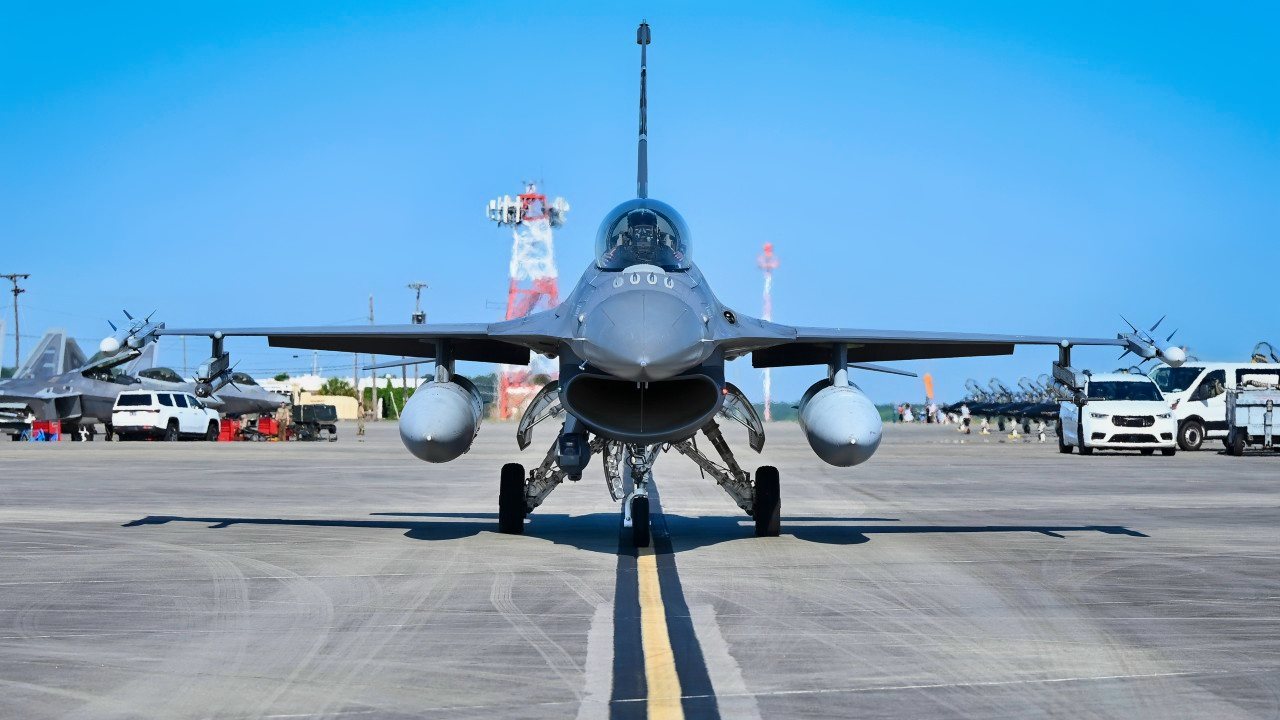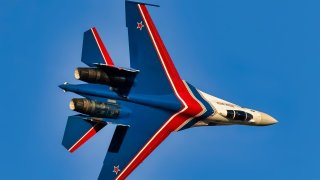Russia's Su-35 Fighter Keeps 'Dropping Like Flies' in Ukraine
Russia's invasion of Ukraine has highlighted the shortcomings of the Sukhoi Su-35 fighter jet. Despite its advanced capabilities, including updated flight control surfaces and the N011 Bars radar system, the Su-35 has struggled to survive in the conflict, with multiple aircraft being shot down.
Russia's Air Force Has a Problem: Russia's invasion of Ukraine has highlighted the shortcomings of the Sukhoi Su-35 fighter jet. Despite its advanced capabilities, including updated flight control surfaces and the N011 Bars radar system, the Su-35 has struggled to survive in the conflict, with multiple aircraft being shot down.
Bigger Problems: The war has exposed broader issues within Russia's military, and the arrival of U.S.-made F-16s in Ukraine adds further pressure on the Su-35.
What Next? However, the impact of these new aircraft remains uncertain given Ukraine's limited numbers and the challenges of operating in contested airspace.
Can Russia's Su-35 Compete With Ukraine's New F-16s?
Russia’s invasion of Ukraine has gone poorly. After two and a half years of fighting, only minimal territory has been gained. The air space above the conflict has never been secured. Tank, vessel, and aircraft stores have been depleted, forcing a reliance on formerly mothballed Cold War tech. Ukraine, meanwhile, enjoys the military and moral support of the international community, while Russia has become a pariah.
Russian President Vladimir Putin’s failure to make meaningful progress has raised questions about Russia’s military might, with criticism being levied against broad-scale strategic focus and granular equipment capabilities alike.
One piece of equipment that has struggled to survive in the conflict is the Sukhoi Su-35.
Keeping the Su-35 Alive in Ukraine
The Su-35 is a fourth-generation fighter that was developed from the Su-27. The Su-35 has one significant visual difference from the Su-27 – the addition of canards and a reworked leading-edge extension on the wing.
The redesigns helped sort out a problem that plagued the Su-27 during high angle of attack attitudes, a persistent buffeting problem. Without this buffeting problem, the Su-35 is capable of pulling 10 Gs, and with its advanced fly-by-wire digital control system, the Su-35 is able to fly with impressive maneuverability.
The flight control surfaces weren’t the only systems updated on the Su-35. The N011 Bars, a weapons-control system with phase-arrayed radar and pulse-Doppler tracking, is new on the Su-35. The N011 allows the Su-35 to track ground targets more readily than the Su-27’s less sophisticated N001. That system was capable enough, tracking 10 targets and firing two missiles at the same time. But the N011 is noticeably better. It can track 15 targets and fire six missiles.
Despite the N011 and the jet’s updated flight surfaces, the Su-35 has had a hard time surviving in the skies above Ukraine. Multiple Su-35s have been shot down, including one off the coast of Sevastopol, where Russia staged its 2014 territorial takeover. The pilot of the Su-35 that crashed near Sevastopol was rescued. Footage posted online showed the Su-35 on fire as it spun out of control into the sea. The cause of the crash remains unknown.
The Sevastopol crash is hardly an anomaly. Two Su-35s were shot down in February – a bad month for the Russians, in which warplane losses were sustained “at a rate of 60 per month.”
Facing the F-16
The Su-35 will have more competition now that Ukraine has finally received their first shipment of American-made F-16s. Granted, Ukraine doesn’t have many F-16s – and the non-stealth fighter would struggle to survive in offensive situations over territory influenced by Russian air defenses. The F-16 will likely be used sparingly and may not affect the survivability of Russia’s Su-35s.

About the Author: Harrison Kass
Harrison Kass is a defense and national security writer with over 1,000 total pieces on issues involving global affairs. An attorney, pilot, guitarist, and minor pro hockey player, Harrison joined the US Air Force as a Pilot Trainee but was medically discharged. Harrison holds a BA from Lake Forest College, a JD from the University of Oregon, and an MA from New York University. Harrison listens to Dokken.
Image Credit: Creative Commons and/or Shutterstock.


